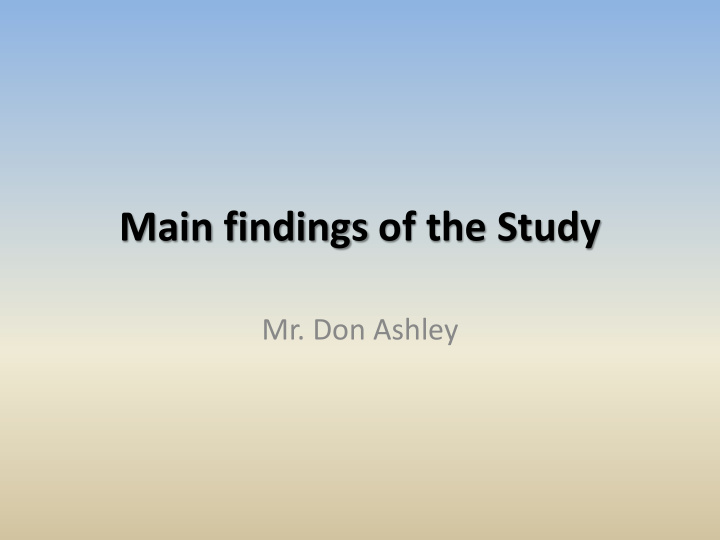



Main findings of the Study Mr. Don Ashley
UNCTAD/CITES information session, June 2013 UNIC tanners meeting, July 2013
Field trips to South East Asia
Table 1. Reported global trade in skins of large CITES-listed snakes 1995-2011 *includes P. breitensteini and P. brongersmai
Type of marking options 1. Specific to trade in pythons while drawing upon systems currently used, such as for crocodilian skins or yellow anaconda; 2. Lowest cost available, if not ‘costless’, especially for range States; 3. Effective, easy to apply and simple to distribute; 4. Pragmatic and business-friendly; 5. Fraud proof to the extent possible so as to avoid counterfeit; 6. Have real time online registration in place (which could be compatible with mobile technology to register skins); 7. Accounts for the difference between harvest from the wild and from breeding farms; 8. Provide revenues that can be used by range States to finance the implementation of the traceability system; and 9. Based on technical and scientific analysis, as well as based on population and trade data.
Button style tags
Example of a generic RFID chip AFR Soft Tag
Note: All marking systems would require the use of computers or similar electronic equipment. Inclusion of a database in the System Estimated cost in US$ Other costs involved in US$ estimated cost Button tag (Yellow anaconda) 0.57 No tag (Indonesian crocodile) 0.30 No Barcoded loop tag (Louisiana alligator) 0.17 Scanner (150 approximately) No QR Barcode Button Style tag $.18-.30 requested partial All4Retail RFID chip Requested VCC RFID system 1.30 - 2.50 Requested Yes
Indonesia ID Sticker CITES Export Inspection
Protected Areas in Indonesia
Inventories
Key findings • Marking and traceability systems – Two-tier system – Marking systems for phases one and two – Supply chain and points of tagging – Stockpile inventories – Skinning instructions • Complementing CITES permiting system • Improve conservation and sustainable use frameworks – Non-Detriment Findings • Enhance compliance and enforcement – Illegal trade impacts • Enhance capacity building • Encourage stakeholder engagement • Dedicated funding • Equitable cost and benefit sharing • Animal welfare and humane killing guidelines
Next steps • Continue testing traceability systems; • Collaboration options; • Option for range States to initiate national regulations or legislations: – Inventories and tagged stockpiles by 2014; – All python skins in trade tagged by 2015. • Workshops early 2014 • Continue «World Trade in Skins of Large CITES-Listed Snake Species» • Simplified access and management of data UNEP WCMC Sustainable Sourcing Program; • «Mash-to-Market» • Monitoring and surveys of South East Asia python breeding operations
SUSTAINABLE TRADE WITH BENEFITS TO: COMMERCE CONSERVATION COMMUNITIES
Recommend
More recommend